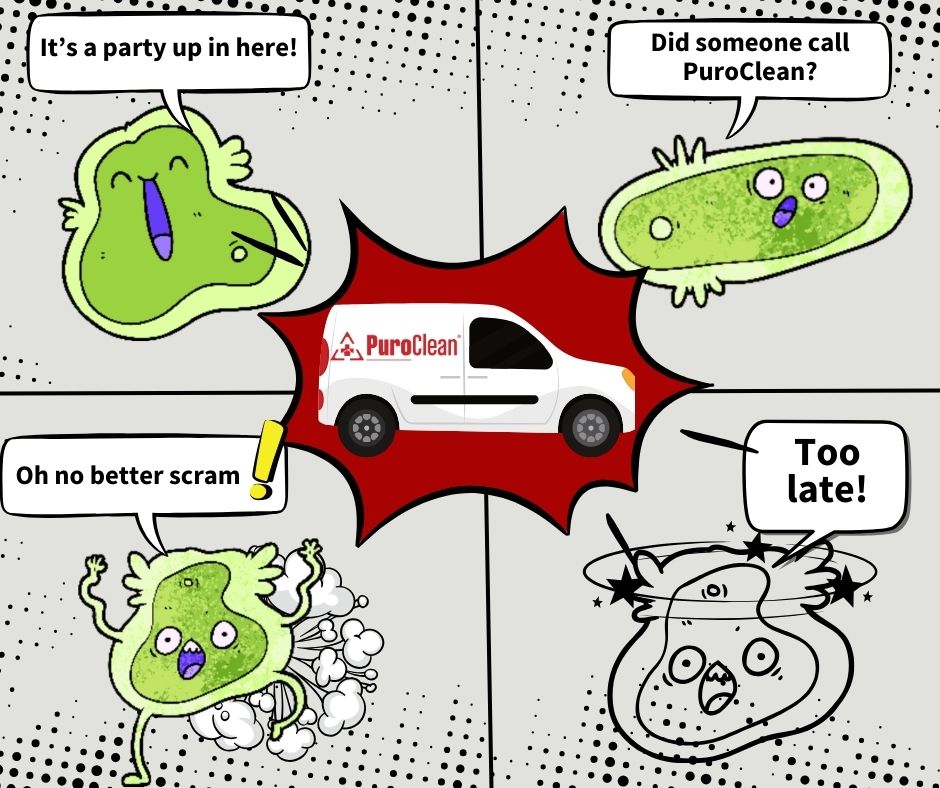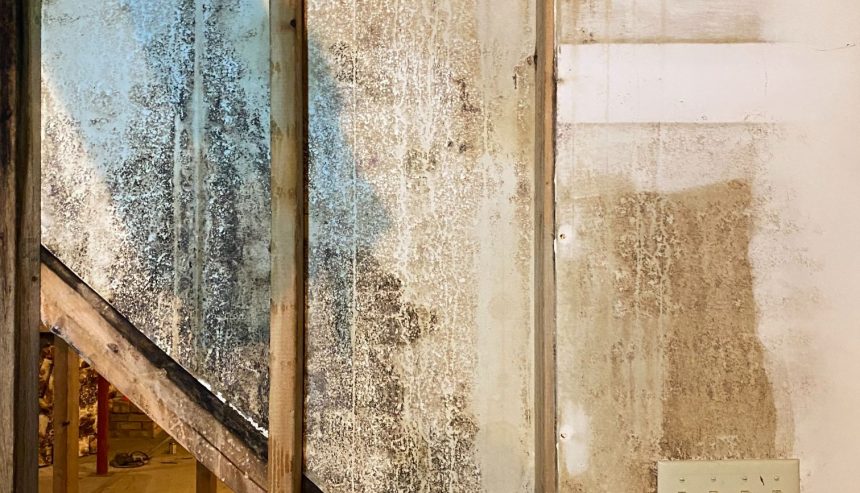Here in Southeastern Indiana, in the Ohio River Valley, mold often grows out of sight, in areas like wall cavities, due to water problems like flooding or leaks. Before you know it, it can cause your walls to deteriorate from the inside out. The other problem is the toxic environment that results from mold spore contamination.
According to the Centers for Disease Control and Prevention (CDC), indoor exposure to mold is linked to upper respiratory tract symptoms, including coughing and wheezing in otherwise healthy people. Children, the elderly, and those who suffer from a respiratory disease or allergies are most susceptible to the health risks of exposure.
Considering how easily it can grow in homes is certainly bad news for residents of towns on the Ohio River like Madison, IN and surrounding areas. Mold only needs food (organic material like wood, paper or drywall), an ideal temperature (68°F to 86°F), and water. Very little water is needed — even a relative humidity above 60% can drive mold growth indoors. The good news is that, with persistence, hidden mold can be detected in several ways. Follow these signs and methods to tell if it is growing inside your walls.
Table of Contents
How To Tell If Mold Is In Your Walls
Moisture
If your home has been flooded, it won’t take long before water reaches your walls. Mold will grow in them if the walls and the surrounding area aren’t dried within 24–48 hours. Other water problems like leaking pipes or a leaking roof may also trap moisture inside your walls. Even if the leaks are visible (occurring close to the walls), moisture can find its way deep into walls, providing mold a place to grow. Fix the water problems immediately to prevent further problems.
Visible Signs of Mold
If the wall is rotting, it likely has moisture and mold behind it. In less severe cases, rot and mold might not be that noticeable. Take a close look at the walls and check behind furniture and along baseboards. Mold comes in many different colors and textures, so it’s important to recognize them. Depending on its age and the source of “food,” mold can be black, green, gray, white or brown. It can even have orange, pink or purple shades when it grows behind vinyl wallpaper.
Another visible sign is discoloration of walls. Even if the wall has been painted over, mold will show signs on the surface if water damage inside the walls persists. Be aware of other visible signs of wet drywall, such as:
• Water stains
• Dark rings
• Deterioration like peeling, bubbling or cracking
of the paint or wallpaper
• Bowing, bulging or warping
• The wall surface feels wet or damp to the touch
If you notice any of these signs on your drywalls, they most likely contain moisture and mold. Take action immediately as the longer you wait, the more water damage and mold growth will occur. A more definitive method to determine if mold is in your walls is to cut a large hole in them. Of course, the drawback is that you will have a large hole in your wall. If you don’t find mold, you’ll have to patch the hole, so be sure to have plastic sheeting ready to cover the hole.
Another problem is that you can damage electrical or mechanical systems in the wall. Thus, you must make sure to cut an area that won’t cause that type of damage. Also, you may be disturbing federally regulated materials such as asbestos and/or lead-based paint. Consult an indoor air quality professional to advise you or to test before you make any cuts.
Musty Smell
If you can smell mold but you can’t see it, it may be hiding somewhere in your home, including the walls. Mold smells earthy, like rotting leaves or decaying wood in a dense, damp forest. If you think there’s a chance it’s in your walls, smell the electrical outlets (after you’ve unscrewed them first). This might sound silly, but it may help you sense hidden mold better. That’s because outlets and other openings offer better access to the area behind walls. However, this method won’t help you assess the extent of the problem.

To best determine if or how much mold is in your walls, consult a mold removal company like PuroClean Home Emergency Services. We use professional inspection techniques and tools to determine the existence and extent of water and mold damage. For mold removal and water damage repair services, contact PuroClean!




 PuroClean Home Emergency Services
PuroClean Home Emergency Services